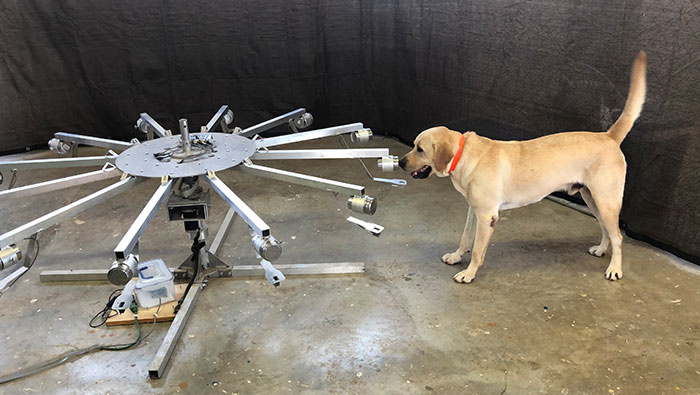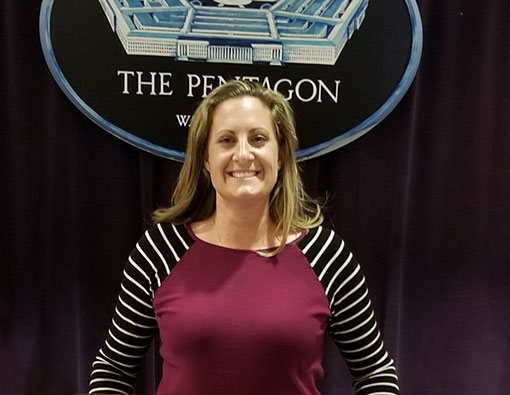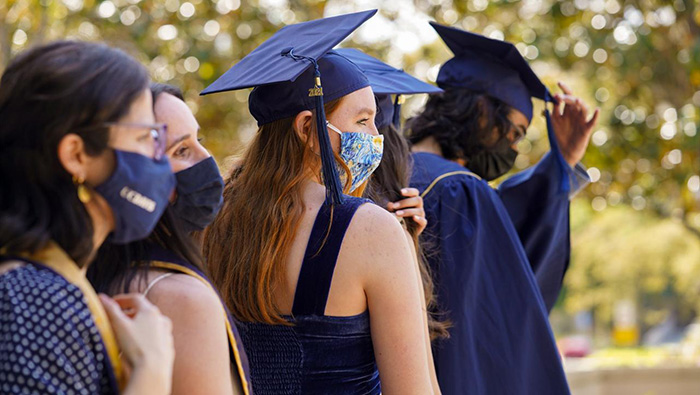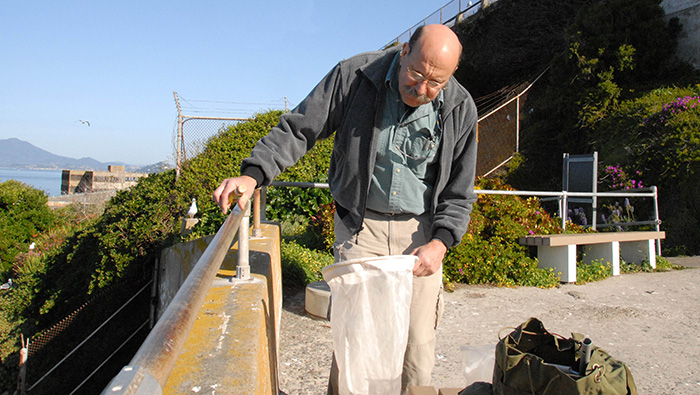
A COVID-19 detection canine smells samples presented on a training wheel. (Courtesy)
Alumna Looks to Dogs to Detect COVID-19
Jenna Gadberry ’03 is using her extensive background in chemical and biological defense to answer the question: Could dogs detect COVID-19?
Gadberry, a researcher with the U.S. Army’s Combat Capabilities Development Command Chemical Biological Center, has studied canine detection for military explosives. When the question about COVID-19 arose, her team partnered with the University of Pennsylvania School of Veterinary Medicine Working Dog Center.
“My colleagues and I look at the dog as the ultimate technology,” said Gadberry. “I will put something out there, and if my machine can’t find it, I’m always going to double check it with a dog.”

Jenna Gadberry has an extensive background in chemical and biological defense. (Courtesy)
The dogs are trained to respond to the odors of COVID-19, the metabolites produced by someone who has the virus. A dog’s sensitive nose can be trained to hone in on the smell immediately, even before the person has developed symptoms like a fever.
Phase one of the project launched in May, with a dog trainer teaching the animals to detect the virus down to parts per trillion. The first phase focused on saliva and urine from virus-positive patients. Phase two will transition to sweat.
Ultimately, these dogs could help in labs or at screening checkpoints for public spaces such as airports and schools. Some countries have already begun similar projects, and the UAE has deployed them in airports.
Gadberry has worked as a scientist since graduating in biological sciences from UC Davis. She spent many years in forensic science. Previous projects have involved studying human scent as viable evidence in a court of law, helping develop devices for collecting and storing human scent and aiding the deployment of the Multipurpose Canine Program for Special Forces. The latter now has approximately 200 dogs.
She moved to the CCDCCBC in 2016. Her latest project could have a broad impact.
“Is it the way of the future? I would like to say yes because it’s a quick [solution],” she said. “We already have dogs in vineyards and also hop farms clearing for fungus. We use dogs because they are fast and efficient.”









